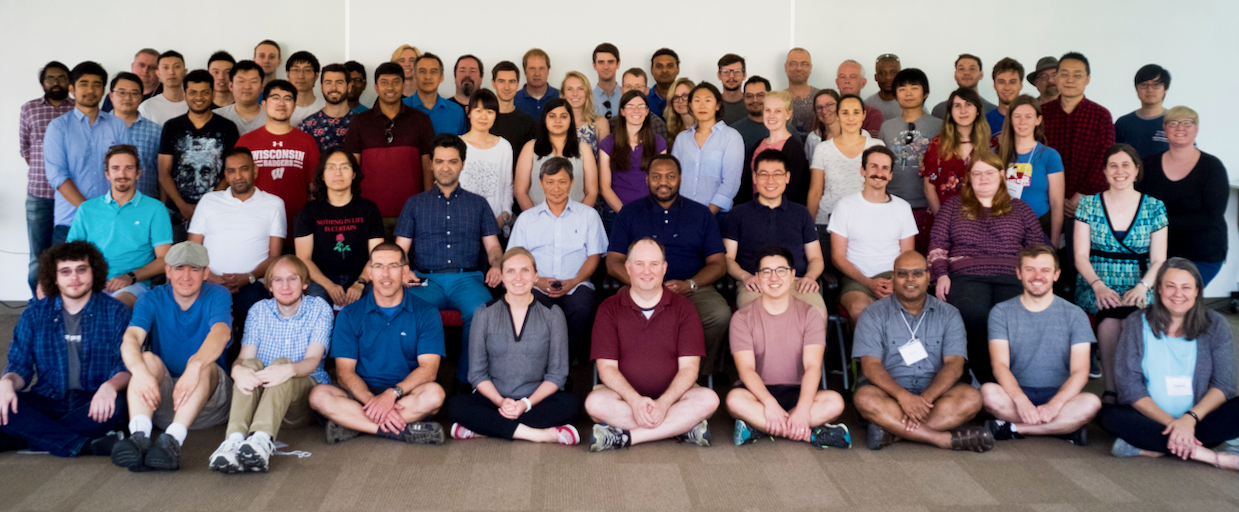OSG User School 2019
The OSG User School 2019 was held at the University of Wisconsin–Madison on July 15–19. This year’s event hosted 55 participants, drawn from a pool of 86 applicants. These numbers are consistent with the past few years, taking into account annual variation.
Participants included mostly graduate students with some post-doctoral researchers, faculty, and staff from research institutions in the United States (plus two from Canada and one each from Germany, India, South Africa, and Spain). The range of scholarly domains was very diverse, including physics, biology, chemistry, medicine, engineering, statistics, social sciences, plant sciences, neuroscience, and economics. Participants were selected by demonstrating need for large-scale computing and by being in a position to transform their scholarly work through computation. There were seven full-time staff, plus others who helped at least part of the week, from UW–Madison, Rutgers University, University of California San Diego, and University of Nebraska Lincoln.
This year’s curriculum continued the tradition of focusing on hands-on practice with a wide variety of user tools, providing a solid grounding for advanced and theoretical topics later in the School as well as further learning afterward. Much of the curriculum was carried over from 2018, with minor updates to stay current. This year, though, there was more discussion about accessing different kinds of computing resources, such as graphics-processing units (GPUs), and about expanding resource pools using commercial clouds, such as Amazon EC2. The larger changes reflected both changes in the technologies involved plus improved pedagogical approaches based on experiences with past OSG User Schools and other science end-user engagements.
All of the training materials from the School remain available online after the event, to be available to others around the world and to serve as reference material. Participants also received several clear options for getting ongoing help with their large-scale computing needs. Plus, every participant left the School with at least two ways to run jobs — an account on a UW–Madison HTCondor submit node and an OSG Connect account — so that there are as few barriers to computing and storage resources as possible.

From formal training evaluations to informal comments and emails, the School was clearly a success. Participants were happy with the program, with how much they learned, and with the new paths that are now open to them. Further, most participants completed a final written assignment after the event, describing a research computing challenge and their plans for applying material from the School to handle the challenge using distributed high throughput computing. From these assignments, it is clear that most participants have concrete, realistic plans to advance their research through computing, and many have begun doing so already.
– Tim Cartwright